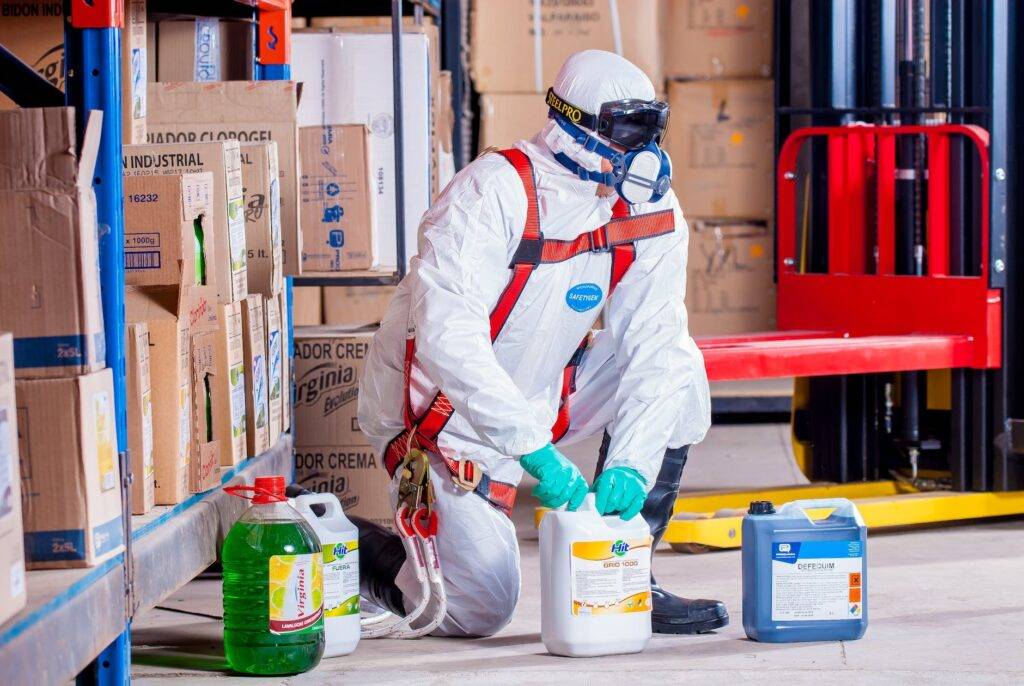
Hazardous Materials Handling: Storage and Spill Response
Introduction
Handling hazardous materials in the workplace demands meticulous attention to storage practices and a well-prepared response plan for potential spills. This article delves into the importance of proper storage procedures for hazardous materials and outlines effective spill response strategies to ensure the safety of both employees and the environment.
Hazardous Materials Storage: Best Practices
- Segregation and Compatibility
- Segregating different types of hazardous materials based on compatibility
- Preventing chemical reactions that could result in dangerous reactions or releases
- Proper Labeling and Signage
- Ensuring all containers are properly labeled with clear identification
- Implementing visible signage indicating the presence of hazardous materials in designated storage areas
- Ventilation Systems
- Utilizing adequate ventilation systems in storage areas
- Minimizing the accumulation of fumes or vapors that could pose respiratory hazards
- Temperature Control
- Implementing temperature control measures for materials sensitive to temperature variations
- Preventing degradation or chemical reactions due to extreme temperatures
- Secure Storage Containers
- Using secure and leak-proof containers for hazardous materials
- Reducing the risk of spills and leaks that could lead to contamination
- Emergency Shutdown Procedures
- Establishing emergency shutdown procedures for storage systems
- Providing a quick and effective means to isolate hazardous materials in case of an emergency
- Employee Training
- Training employees on proper handling and storage procedures
- Ensuring awareness of the hazards associated with specific materials and the importance of adherence to safety protocols
- Regular Inspections
- Conducting regular inspections of storage areas and containers
- Identifying and addressing potential issues before they escalate
Spill Response: Quick and Effective Actions
- Emergency Communication
- Establishing clear communication channels for reporting spills
- Ensuring employees know the designated point of contact for spill incidents
- Evacuation Protocols
- Implementing evacuation protocols for immediate safety
- Evacuating personnel from the affected area to prevent exposure to hazardous substances
- Personal Protective Equipment (PPE)
- Providing and ensuring the use of appropriate PPE during spill response
- Minimizing the risk of exposure to hazardous materials for responders
- Containment Measures
- Implementing containment measures to prevent the spread of spilled materials
- Using barriers and absorbents to confine the spill and minimize environmental impact
- Spill Cleanup Procedures
- Following established spill cleanup procedures
- Utilizing spill kits and specialized cleanup materials to safely and efficiently address the spill
- Proper Disposal
- Ensuring proper disposal of contaminated materials
- Adhering to regulations and guidelines for the disposal of hazardous waste
- Post-Incident Evaluation
- Conducting a post-incident evaluation to identify the cause of the spill
- Implementing corrective actions to prevent similar incidents in the future
- Training and Drills
- Conducting regular training sessions and drills for spill response
- Enhancing the preparedness and effectiveness of employees in responding to hazardous material spills
Conclusion
In conclusion, the proper handling, storage, and response to hazardous materials are integral aspects of workplace safety. Adhering to best practices in storage, conducting regular inspections, and implementing swift and effective spill response measures contribute to the overall safety of employees and the environment. By prioritizing awareness, training, and continuous improvement, organizations can create a secure and resilient framework for handling hazardous materials in the workplace.
Mental Health in the Workplace: Addressing Psychological Safety as a Safety Officer
Safety Inspections: A Step-by-Step Guide for Safety Officers
Implementing and Evaluating Safety Training Programs for Employees
Occupational Health and Safety Trends: Staying Ahead as a Safety Officer
Emergency Response Planning: Best Practices for Safety Officers
Frequently Asked Questions (FAQs)
- Why is segregation of hazardous materials important in storage?
- Segregation prevents chemical reactions between different types of hazardous materials, reducing the risk of dangerous reactions or releases. Proper segregation ensures the safe storage of materials with compatible properties.
- What are some key elements of proper hazardous materials storage?
- Key elements include segregation and compatibility, proper labeling and signage, ventilation systems, temperature control, secure storage containers, emergency shutdown procedures, employee training, and regular inspections of storage areas and containers.
- What actions should be taken during a hazardous material spill?
- Actions during a hazardous material spill include initiating emergency communication, implementing evacuation protocols, providing and using appropriate personal protective equipment (PPE), containment measures, spill cleanup procedures, proper disposal of contaminated materials, post-incident evaluation, and regular training and drills for spill response.
- Why is regular training and drills important for spill response?
- Regular training and drills enhance the preparedness and effectiveness of employees in responding to hazardous material spills. It ensures that responders are familiar with procedures, use the correct equipment, and can act swiftly in emergency situations.
- What is the significance of post-incident evaluation in spill response?
- Post-incident evaluation helps identify the cause of the spill, allowing for the implementation of corrective actions to prevent similar incidents in the future. It contributes to continuous improvement in spill response procedures and overall workplace safety.
























